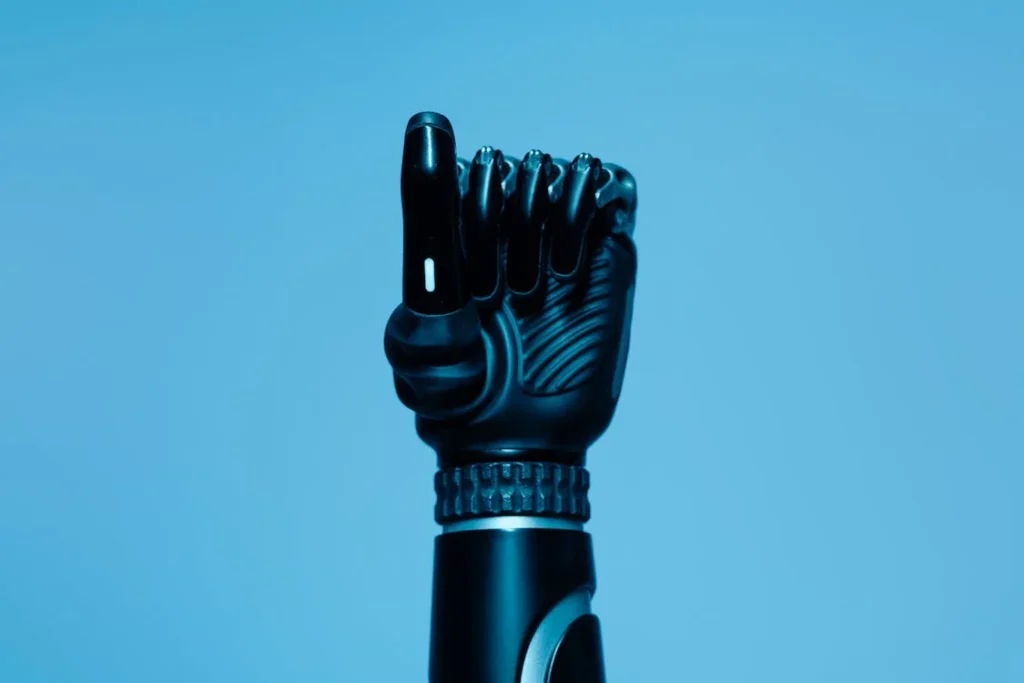Bionic prosthetics have revolutionized mobility, offering advanced features like robotic movement, sensory feedback, and AI-driven controls. They allow users to grip objects with precision, walk with a natural gait, and even regain a sense of touch. With all these innovations, it might seem like bionic prosthetics are the obvious choice for every amputee. However, this is not always the case.
Many individuals still prefer traditional prosthetic limbs over high-tech bionic solutions. The reasons behind this choice vary. Some prefer the reliability and simplicity of mechanical prosthetics, while others find bionic limbs too expensive or difficult to maintain. Comfort, durability, and ease of use also play significant roles in this decision.

The Practicality of Traditional Prosthetics
For many amputees, a prosthetic limb is not just about advanced technology—it is about practicality. Traditional prosthetics are designed to be simple, durable, and functional without relying on complex electronics.
Unlike bionic limbs, which require sensors, batteries, and software, traditional prosthetics operate mechanically, making them easier to maintain and repair.
One of the biggest advantages of traditional prosthetics is their durability. Because they have fewer moving parts, they are less prone to malfunctions.
Many users prefer the reliability of a mechanical limb that does not depend on power sources or delicate sensors. This is particularly important for individuals who work in physically demanding jobs or live in areas where access to prosthetic repairs may be limited.
Another key factor is the ease of use. Bionic limbs often come with a learning curve. Users must train their muscles to send the right signals, practice coordinating movements, and sometimes even reprogram the prosthetic’s settings.
Traditional prosthetics, on the other hand, require minimal training. Many individuals find them more intuitive to use, allowing them to focus on daily activities without constant adjustments.
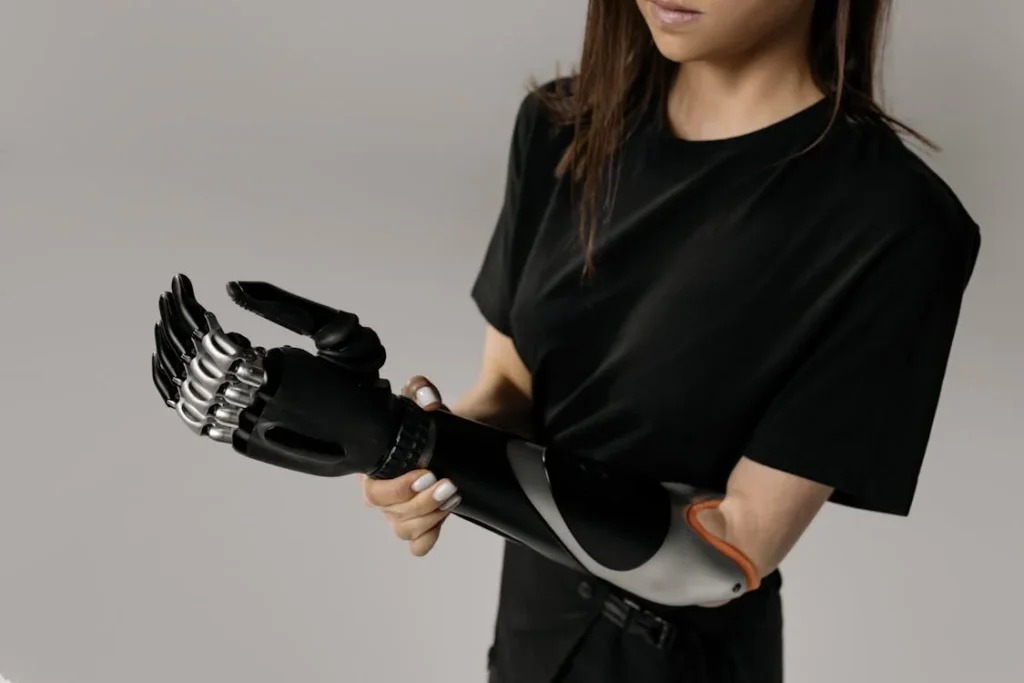
Cost and Accessibility: A Major Factor in Choosing Traditional Prosthetics
One of the biggest reasons many amputees choose traditional prosthetics over bionic limbs is cost. Advanced bionic prosthetics, while offering high-tech features, come with a hefty price tag.
Not only are they expensive to purchase, but they also require ongoing maintenance, software updates, and battery replacements. For many individuals, this financial burden outweighs the benefits of having a more technologically advanced limb.
The High Cost of Bionic Prosthetics
Bionic limbs are among the most expensive medical devices available today. Their high cost comes from the advanced technology inside them—microprocessors, AI-driven motion control, sensory feedback systems, and custom programming.
Even though these features provide greater functionality, they significantly increase the overall expense. Many insurance companies either do not cover bionic prosthetics or offer only partial coverage, making them unaffordable for a large number of amputees.
Traditional prosthetics, on the other hand, are far more cost-effective. They are designed with simpler mechanical components, making them much cheaper to manufacture and repair.
For individuals who need a functional prosthetic without the financial strain, traditional limbs are a more practical option.
Maintenance and Repair Costs
Bionic prosthetics require specialized technicians for repairs and adjustments. If a sensor malfunctions or a battery dies, users may need to send the device to a certified technician, which can take time and add to the expense.
In contrast, traditional prosthetics are more straightforward, with fewer components that can break down. Many users appreciate that mechanical prosthetics can be repaired locally, often at a much lower cost.
Additionally, bionic prosthetics rely on software that needs occasional updates to function properly. These updates can improve performance but may also lead to unexpected issues, requiring professional servicing.
Traditional prosthetics, by comparison, do not depend on software, reducing the risk of technical failures and unexpected expenses.
Insurance and Affordability Challenges
In many countries, including India, insurance policies do not always cover bionic limbs as fully as traditional prosthetics.
While some government health schemes provide partial support, bionic prosthetics often exceed coverage limits, leaving users to pay a significant portion of the cost out of pocket.
This makes traditional prosthetics a more financially accessible choice for individuals who need a reliable and affordable solution.
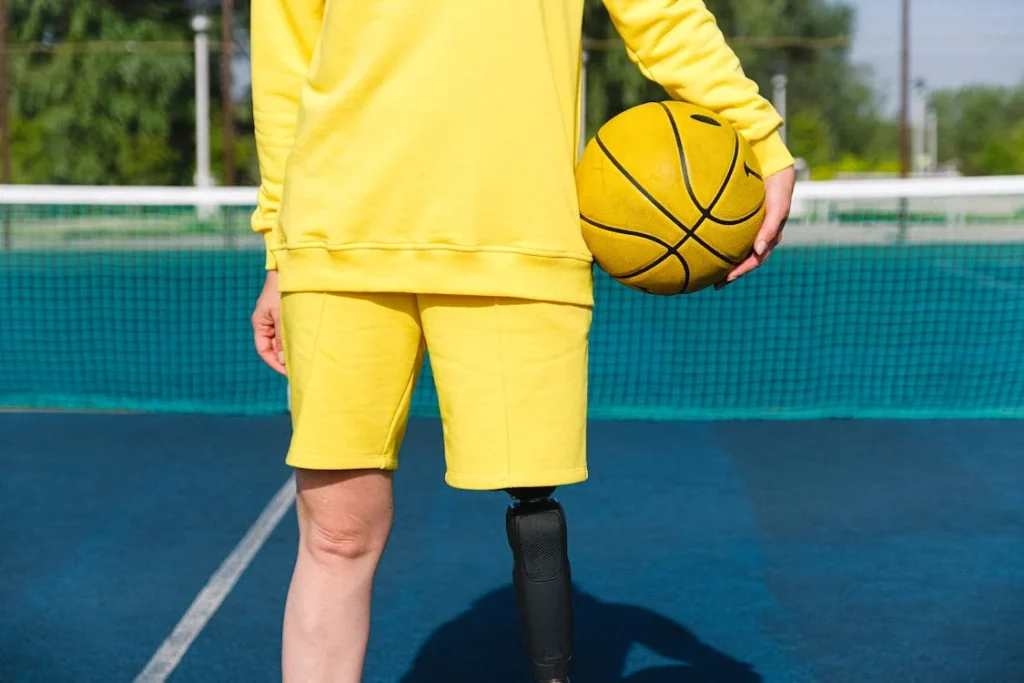
Comfort and Everyday Usability of Traditional Prosthetics
Beyond cost and maintenance, comfort plays a huge role in why some amputees prefer traditional prosthetics over bionic limbs. No matter how advanced a prosthetic is, if it is uncomfortable to wear for long periods, it becomes a burden rather than a solution.
Many users find that traditional prosthetics provide a better overall experience in terms of comfort, fit, and ease of use.
Lightweight and Less Bulk
Traditional prosthetics are generally lighter than bionic limbs. Since they do not contain batteries, sensors, or microprocessors, they have a simpler structure that makes them easier to wear for extended periods.
Bionic limbs, while packed with advanced features, can feel heavier, which may cause strain or discomfort, especially for new users.
For amputees who wear their prosthetic for many hours a day, weight is a critical factor. Heavier prosthetics can lead to muscle fatigue, back pain, and even difficulty with balance.
This is why some individuals opt for traditional prosthetics, as they provide function without adding unnecessary weight.
Better Fit and Less Skin Irritation
Another major concern for prosthetic users is how well the limb fits their residual limb. A prosthetic that does not fit properly can cause discomfort, skin irritation, and even pressure sores.
Traditional prosthetics, with their straightforward mechanical design, are often easier to customize for a snug and comfortable fit.
Bionic prosthetics, due to their complex internal components, sometimes have more rigid structures that limit adjustability.
While modern bionic limbs are improving in terms of comfort, many users still prefer the simpler, softer interface of a traditional prosthetic, which can be padded and adjusted more easily.
No Need for Battery Charging
Bionic limbs require regular charging, which can be inconvenient for some users. If the battery runs out in the middle of the day, the prosthetic may become non-functional, forcing the user to carry a backup power source or plan their activities around charging schedules.
Traditional prosthetics, being fully mechanical, do not rely on batteries or electricity, allowing users to move freely without worrying about power levels.
For individuals who travel frequently, work long hours, or live in areas with unreliable electricity, traditional prosthetics offer a more dependable option. They provide uninterrupted function without the need for constant monitoring or recharging.
Easier to Wear in Extreme Conditions
Some amputees work in environments where heat, moisture, or dust are major concerns. Bionic limbs contain electronic components that may not perform well in extreme conditions.
Excessive heat can cause overheating issues, moisture can damage internal circuits, and dust can interfere with sensors.
Traditional prosthetics, built with durable and non-electronic materials, are often better suited for tough environments. Many laborers, farmers, and outdoor workers prefer them because they can withstand harsh conditions without the risk of malfunctioning.
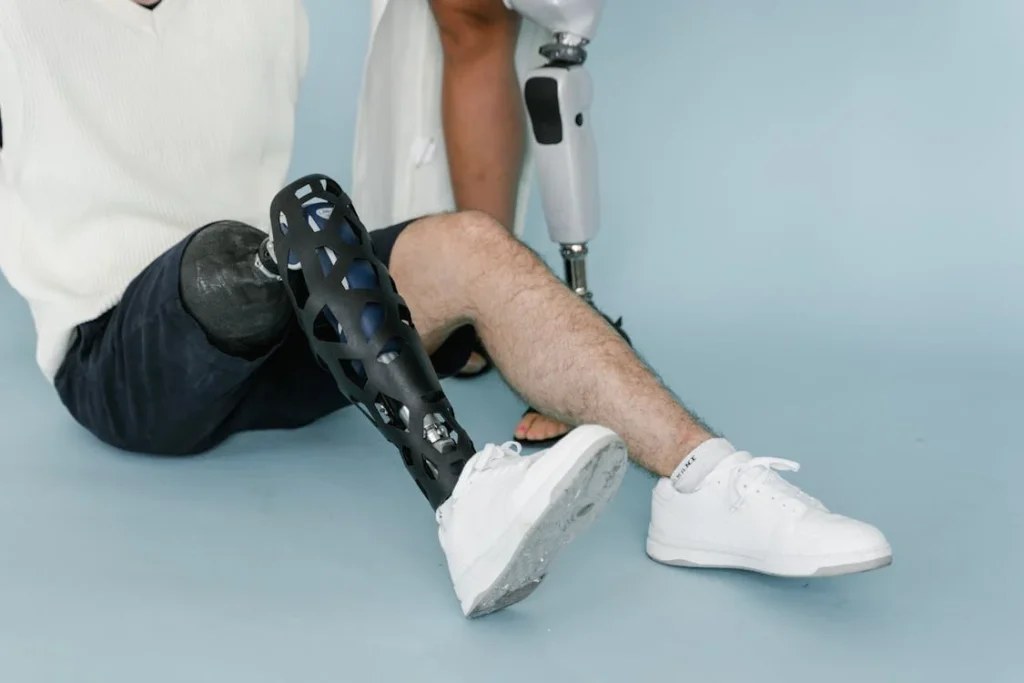
Simplicity and Reliability: Why Some Amputees Avoid Bionic Prosthetics
For many amputees, the choice between a bionic prosthetic and a traditional one comes down to one key factor—simplicity. A prosthetic should provide ease of use and reliability without unnecessary complications.
While bionic prosthetics offer advanced features, they also introduce complexities that some users find frustrating or unnecessary for their daily lives.
Less Training and Adaptation Required
Bionic prosthetics require users to learn how to control them effectively. Many models rely on muscle signals, which means users must train their muscles to send the correct signals for movement.
This learning curve can take weeks or even months, requiring physical therapy and practice. Some individuals find this process too difficult or time-consuming, especially if they need a prosthetic for immediate use.
Traditional prosthetics, on the other hand, do not require complex training. Because they operate mechanically, users can typically start using them right away with minimal adjustments.
This makes them a practical choice for individuals who prefer a straightforward solution that integrates into their lifestyle without extensive rehabilitation.
Less Risk of Malfunctions
Bionic prosthetics rely on electrical circuits, motors, and software, all of which introduce potential points of failure. A sensor could stop working, a battery might drain unexpectedly, or a software bug could cause movement issues.
While manufacturers continually improve the reliability of bionic limbs, the reality is that any high-tech device is prone to malfunctions over time.
Traditional prosthetics, with their purely mechanical design, eliminate these concerns. Because they do not contain electronics, they are far less likely to break down unexpectedly.
Many users value the peace of mind that comes with knowing their prosthetic will work consistently without the risk of a technical failure.
No Need for Frequent Adjustments
Bionic prosthetics often come with customizable settings that allow users to fine-tune movement speed, grip strength, or walking patterns.
While these adjustments can be beneficial, they also require users to interact with apps, control panels, or professional technicians to maintain optimal performance.
For individuals who prefer a low-maintenance solution, traditional prosthetics offer a more hassle-free experience. Once fitted, they typically require minimal adjustments over time, allowing users to focus on their daily activities without having to fine-tune their prosthetic constantly.
More Control Over Movement
While bionic prosthetics aim to replicate natural movement, some users find that mechanical control feels more predictable. In a bionic hand, for example, movement is controlled by interpreting muscle signals or using sensors, which can sometimes result in unintentional actions.
A traditional mechanical hand, in contrast, relies on simple body-powered mechanisms that give users direct control over grip and release.
This predictability is especially valuable in certain professions or activities where precision matters.
Artists, musicians, and craftsmen, for example, may find it easier to work with a body-powered prosthetic that provides consistent movement without the unpredictability of an AI-driven system.
A Preference for Familiarity
For individuals who have used traditional prosthetics for many years, switching to a bionic limb may feel unnecessary.
Many long-term prosthetic users develop a sense of familiarity and comfort with their mechanical limb, making them hesitant to transition to an entirely new system. If their current prosthetic meets their needs, they may see no reason to change.
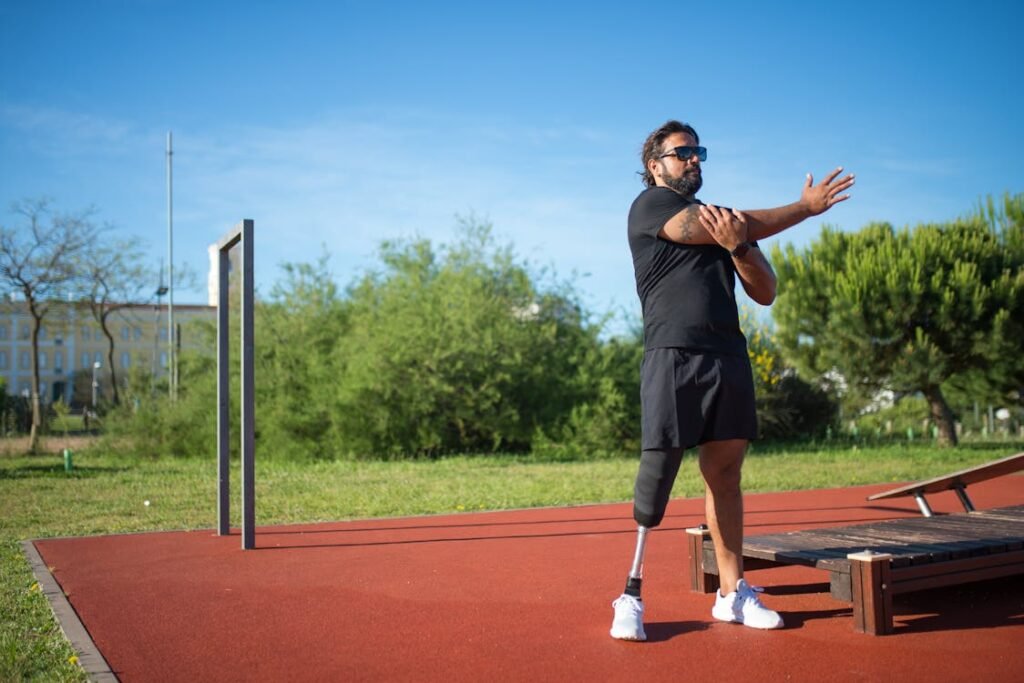
Cultural and Psychological Factors in Choosing Traditional Prosthetics
Beyond technical considerations like cost, comfort, and maintenance, the decision to choose a traditional prosthetic over a bionic one is often influenced by cultural and psychological factors.
For many amputees, a prosthetic is not just a tool for mobility—it is part of their identity. The way they perceive their prosthetic limb and how society views it can shape their decision on whether to opt for a traditional or bionic device.
Personal Identity and Familiarity
For many long-term prosthetic users, especially those who have been using traditional limbs for years, switching to a bionic prosthetic can feel like abandoning something familiar.
They have already learned to navigate daily life with a mechanical limb, and introducing an entirely new system with different movement mechanics can be overwhelming.
Some individuals also prefer the simplicity of a body-powered prosthetic, which requires physical input, such as shoulder movement, to operate.
This gives them a direct sense of control, whereas a bionic limb, which depends on sensors and programmed responses, can sometimes feel detached from their natural instincts.
Cultural Perceptions of Prosthetics
In many cultures, prosthetic limbs are seen as purely functional tools rather than technological enhancements. Some amputees feel that a mechanical limb aligns better with their lifestyle and social environment, avoiding the attention that a high-tech bionic limb might attract.
Additionally, in regions where prosthetic technology is less common, bionic limbs may be viewed as unnecessary or even excessive. Some individuals may feel more comfortable using a prosthetic that blends in rather than one that draws attention due to its robotic appearance.
Avoiding the Psychological Pressure of High Expectations
Bionic prosthetics are often marketed as highly advanced, capable of mimicking real human movement. While this is true in many cases, not all users experience a perfect transition.
Some may find that their bionic limb does not move as smoothly as they expected or that it takes time to master. This can create frustration, especially if they expected the prosthetic to function effortlessly from day one.
Traditional prosthetics, by contrast, set more realistic expectations. Users know what they are getting—a durable, functional limb without the complexities of electronics.
Many individuals find comfort in knowing that their prosthetic will perform reliably without the need to adapt to advanced technology.
Fear of Dependence on Technology
Some amputees worry about becoming too dependent on technology, especially if they have seen others struggle with malfunctions, software issues, or battery failures in bionic prosthetics.
The idea of relying on a device that requires regular charging or technical support can be unsettling.
Traditional prosthetics offer a sense of self-sufficiency, as they do not rely on external power sources or electronic components.
This can be especially important for individuals who travel frequently, live in remote areas, or work in professions where durability and consistency are more valuable than advanced technology.
Emotional Connection to Their Prosthetic
A prosthetic limb is more than just a tool—it becomes part of a person’s body and daily life. Some users develop a deep emotional connection to their prosthetic, especially if they have used it for many years.
For these individuals, upgrading to a bionic limb feels unnecessary or even disruptive to their sense of self.

The Role of Lifestyle and Daily Activities in Prosthetic Choice
The decision between a traditional prosthetic and a bionic limb is not just about technology—it is about how the prosthetic fits into a person’s lifestyle. Different individuals have different needs based on their daily activities, work environment, and personal preferences. While bionic prosthetics offer advanced features, they may not always align with the specific demands of a user’s routine.
Prosthetics for Active Lifestyles and Physical Work
For individuals with active lifestyles or physically demanding jobs, durability is a top priority. Many laborers, farmers, and construction workers prefer traditional prosthetics because they are built to withstand heavy use without the risk of electrical failures.
A bionic prosthetic, with its complex wiring and microprocessors, may not hold up as well in rough environments where dust, dirt, or moisture can cause malfunctions.
Athletes, especially those involved in high-impact sports, may also find that traditional prosthetics provide better stability and strength.
Mechanical running blades, for example, are widely used in track and field events because they offer maximum energy return and speed without the need for electronics.
Traditional Prosthetics in Water-Based Activities
One of the limitations of bionic prosthetics is their sensitivity to water. While some newer models are water-resistant, most are not fully waterproof. This makes them less suitable for activities like swimming, fishing, or working in wet environments.
Traditional prosthetics, made from durable, non-electronic materials, can be used in water without concern. Many amputees who enjoy swimming, surfing, or working in coastal regions prefer mechanical limbs because they do not require special precautions to protect sensitive components.
Ease of Use for Elderly and Non-Tech-Savvy Users
For older individuals or those who are not comfortable with technology, bionic prosthetics can feel overwhelming. Adjusting settings, troubleshooting software issues, or remembering to charge the prosthetic can add an extra layer of difficulty to daily life.
Traditional prosthetics, with their simple design and straightforward function, are often a better fit for elderly users or those who prefer a no-maintenance approach.
Once fitted properly, a mechanical limb requires little adjustment, making it an easy and reliable solution for individuals who value simplicity.
Traditional Prosthetics in Rural and Remote Areas
Access to repair services and technical support is a key factor in prosthetic selection. In rural or remote areas where advanced prosthetic clinics are scarce, maintaining a bionic limb can be challenging.
If a bionic prosthetic breaks down, users may have to travel long distances or wait for specialized parts to be shipped, causing significant delays in mobility.
Traditional prosthetics, with their durable design and easy repair process, are often the preferred choice in such regions. Many mechanical prosthetic repairs can be done locally by technicians who do not require advanced training in electronics.
This ensures that users can maintain their prosthetic without relying on expensive or hard-to-find services.
The Need for Quick Replacement
In cases where a prosthetic is lost, damaged, or broken beyond repair, getting a quick replacement is crucial. Traditional prosthetics are easier and faster to replace because they do not require custom programming or specialized electronic components.
For individuals who cannot afford long waiting periods or need an immediate solution, a mechanical prosthetic offers a practical alternative. Many users keep an extra traditional prosthetic as a backup, ensuring that they are never without a functioning limb.
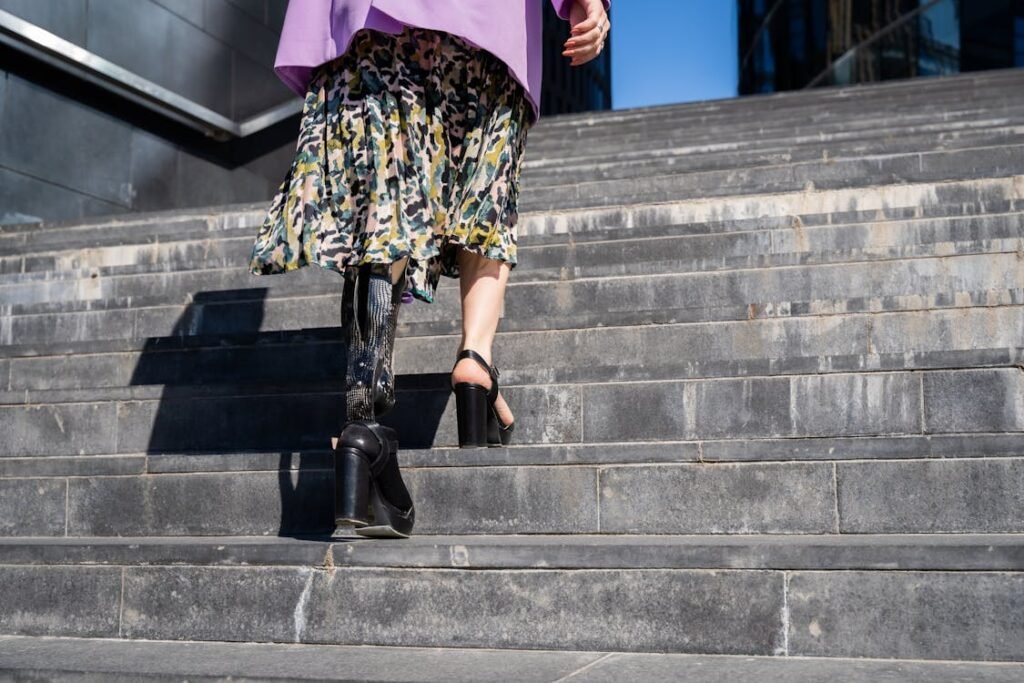
The Psychological Impact of Choosing a Prosthetic
Beyond the physical and practical considerations, the choice between a traditional prosthetic and a bionic limb has a significant psychological impact.
A prosthetic limb is not just a tool—it becomes a part of the user’s identity, affecting their confidence, social interactions, and emotional well-being.
For some amputees, a traditional prosthetic offers a greater sense of control, familiarity, and emotional stability compared to a high-tech bionic alternative.
Building Confidence Through Simplicity
Many amputees find comfort in the reliability of a traditional prosthetic. With no sensors to misinterpret signals and no batteries to charge, users can trust that their limb will function exactly as expected.
This predictability helps build confidence, especially for individuals who rely on their prosthetic for work, social activities, and mobility.
In contrast, bionic prosthetics, while offering more advanced functions, sometimes introduce uncertainties. If a bionic hand misreads a muscle signal and grips too tightly or too weakly, it can cause frustration.
If a bionic leg does not adjust correctly to terrain, it can make walking feel unstable. Some users prefer a mechanical limb because it provides direct control, reducing stress and uncertainty in daily life.
Managing Expectations and Avoiding Disappointment
Bionic prosthetics are often marketed as revolutionary devices that can fully restore lost function. While they offer incredible advancements, they are not yet perfect.
Some users expect a bionic limb to feel just like a natural one, only to discover that it still requires effort, training, and adaptation.
This mismatch between expectation and reality can lead to disappointment. Traditional prosthetics, on the other hand, set clear and simple expectations.
Users know that their mechanical limb will not move automatically or respond to muscle signals—it will function in a predictable, straightforward way. For some, this makes the transition to a prosthetic easier and less emotionally stressful.
Emotional Attachment to a Long-Used Prosthetic
For many individuals, a prosthetic limb is more than a medical device—it is an extension of themselves. People who have used traditional prosthetics for years often develop a deep emotional connection to their limb.
They trust it, they are used to its weight and movement, and they feel comfortable with how it fits into their lifestyle.
Switching to a bionic prosthetic can feel like a loss rather than an upgrade. The learning curve, the differences in movement, and the unfamiliar mechanics can make some users feel disconnected from their new limb.
As a result, many prefer to stick with what they know and trust.
Social Perception and Personal Comfort
The way a prosthetic limb looks can also influence a user’s decision. Some individuals prefer traditional prosthetics because they are simpler, more discreet, and blend in better with their body.
Bionic limbs, with their robotic appearance and exposed mechanical parts, may attract more attention.
While some users embrace the futuristic look of a bionic limb, others prefer to avoid extra attention in public spaces.
The choice of a prosthetic is deeply personal, and for many, comfort extends beyond just physical fit—it includes how they feel about their appearance and how others perceive them.
Conclusion
Choosing between a traditional prosthetic and a bionic limb is a deeply personal decision shaped by cost, comfort, practicality, and emotional factors. While bionic prosthetics offer advanced technology and greater functionality, they also come with challenges such as high costs, maintenance requirements, and a learning curve. Many amputees prefer traditional prosthetics because they are more affordable, durable, and easier to use, especially for physically demanding jobs, rural environments, and daily activities.
Beyond functionality, psychological factors also play a role. Some users feel more confident with a familiar, predictable mechanical limb, while others prefer the simplicity and reliability of a traditional prosthetic. Emotional attachment, social perceptions, and ease of adaptation all contribute to why some amputees choose to stick with non-bionic options.
Ultimately, the best prosthetic is the one that fits the user’s needs and lifestyle. Whether traditional or bionic, prosthetics are about restoring independence and improving quality of life. At Robobionics, we help individuals find the right prosthetic solution tailored to their unique circumstances. If you’re exploring prosthetic options, contact us today for a free consultation and expert guidance on making the best choice for you.



